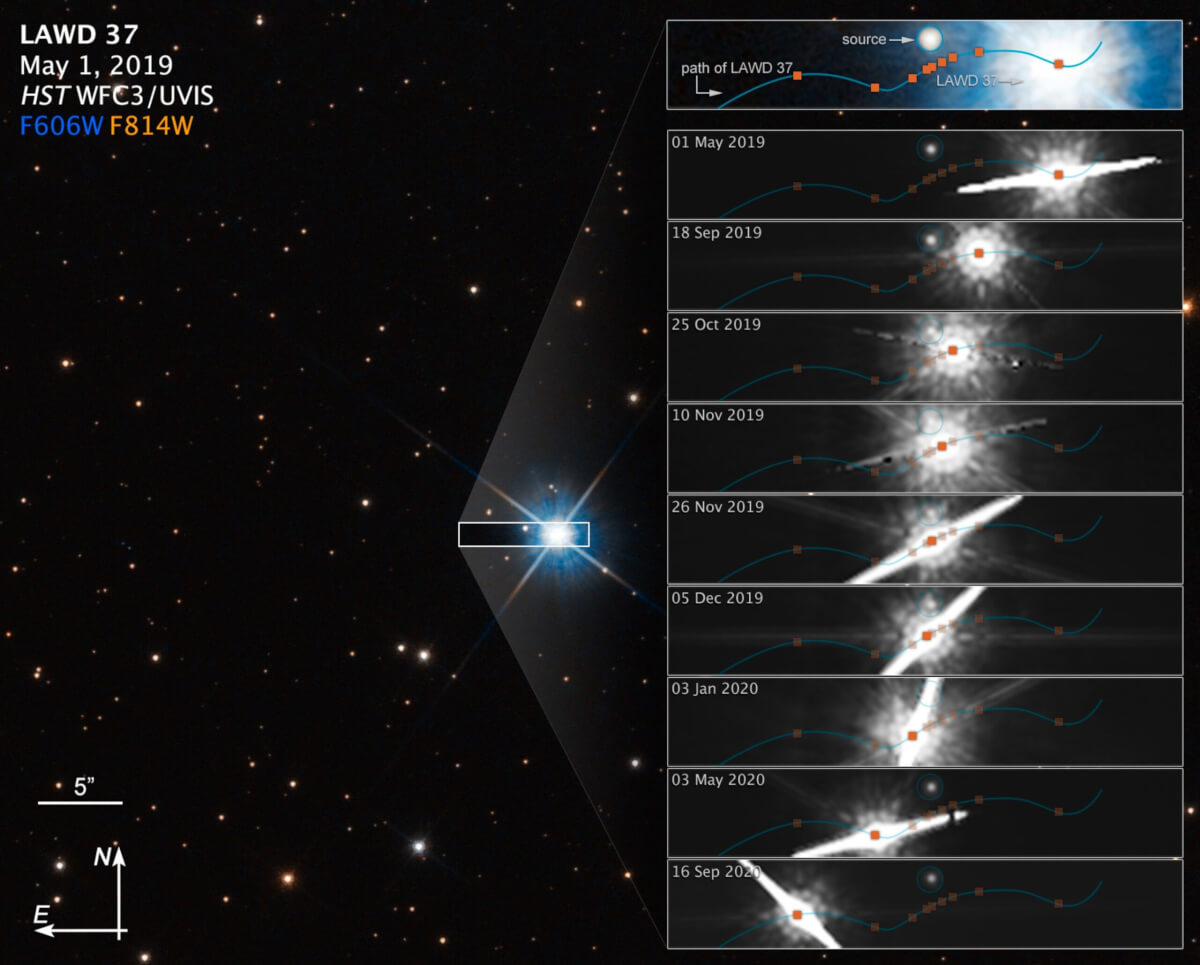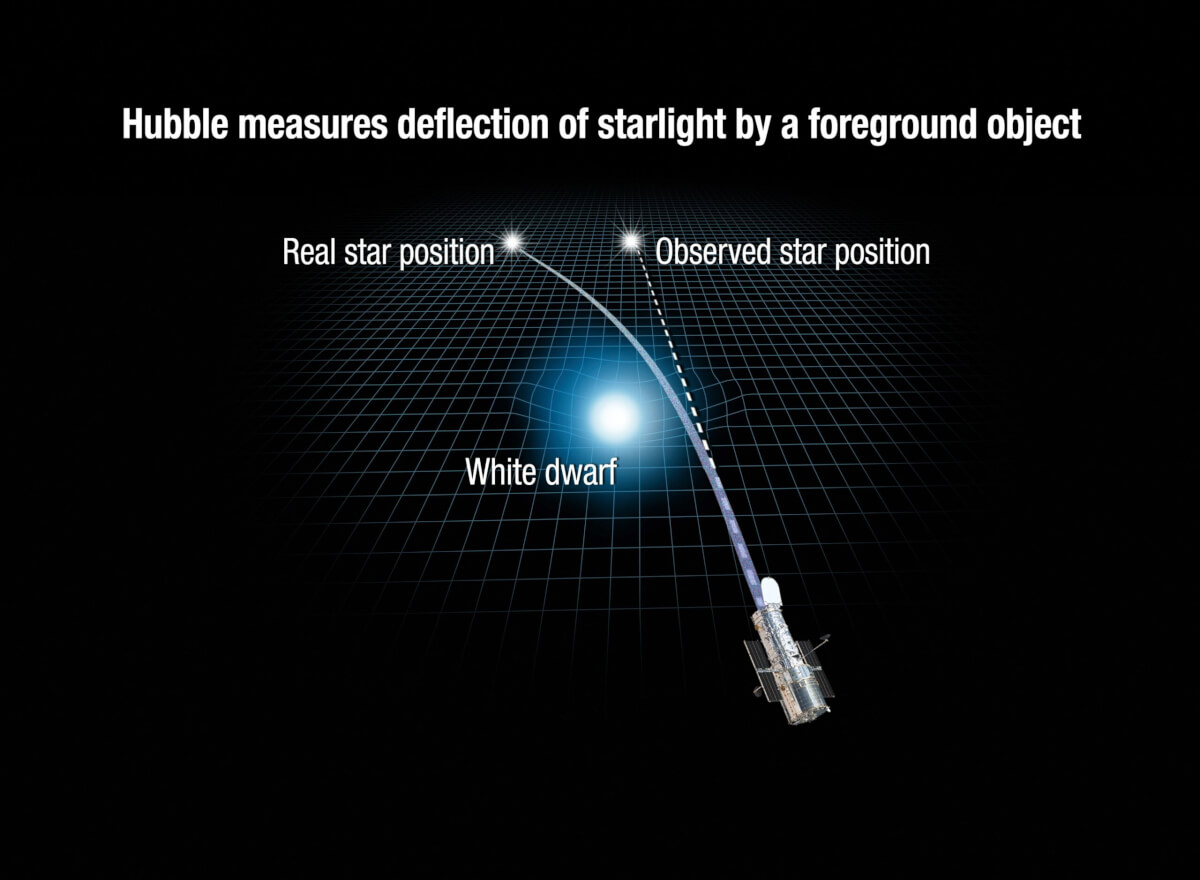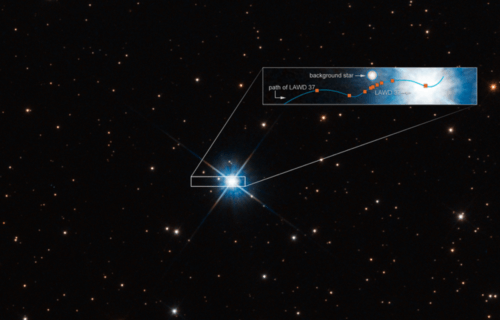CAMBRIDGE, United Kingdom — Nearly 70 years after his death, Albert Einstein is still contributing to science and astronomy. Using an effect first predicted by Einstein, astronomers have successfully measured the light from a dead star. This effect, called gravitational microlensing, allowed astronomers to measure light from a white dwarf called LAWD37, which apparently causes it to bend and change its apparent position in space.
Other than our Sun, this was the first time the effect has been seen in a single, isolated star. It was also the first time astronomers successfully measured a white dwarf. LAWD37 is a white dwarf, and scientists believe it’s a glimpse of what our Sun will look like when it dies billions of years from now. When a star dies, it stops burning fuel and releases outer material, leaving behind a hot, dense core. Matter turns into something called electron-degenerate matter.
“White dwarfs give us clues into how stars evolve – someday our own star will end up as a white dwarf,” says lead author Dr. Peter McGill, who carried out the research while completing his PhD at Cambridge’s Institute of Astronomy, in a media release.
One of the reasons LAWD37 is a star of interest is that it’s relatively close to us. The white dwarf is 15 light-years away in the Musca constellation and is the leftover remnant of a star that died about 1.15 billion years ago.
“Because this white dwarf is relatively close to us, we’ve got lots of data on it – we’ve got information about its spectrum of light, but the missing piece of the puzzle has been a measurement of its mass,” says McGill.

Mass is an important part of a star cycle. Most of the time, astronomers infer the mass indirectly using strong but untested models. In rare cases when mass can be estimated, the star usually has a neighbor — making it a binary star system. But for single stars like LAWD37, scientists turn to Einstein for help.
Einstein’s general theory of relativity suggests that when a massive compact object passes in front of a distant star, the gravitational field causes light to bend around the object. Known as gravitational microlensing, the theory was first proven in 1919 when two British astronomers spotted it during a solar eclipse. However, Einstein himself doubted this theory would hold true for stars outside our solar system.
It turns out his pessimism was not warranted. In 2017, astronomers detected gravitational microlensing for a nearby white dwarf part of a binary system called Stein 2051 b. This new study observed the gravitational microlensing effect in a single white dwarf.
The astronomers captured their data using the European Space Agency’s Gaia Telescope and The Hubble Space Telescope. The Gaia satellite created a complete multi-dimensional map of the Milky Way, which allowed the study authors to predict the movement of LAWD37. It also allowed them to point Hubble to the right place and at the right time to observe the effect. The gravitational microlensing on LAWD37 occurred in November 2019.

Not everything was smooth sailing. The light from the background star was very faint, forcing astronomers to extract as much lensing signaling data apart from other noises.
“These events are rare, and the effects are tiny,” explains McGill. “For instance, the size of our measured effect is like measuring the length of a car on the Moon as seen from Earth, and is 625 times smaller than the effect measured at the 1919 solar eclipse.”
Once they collected enough lensing signal data, the team measured the size of the light deflection from the background source. This gave researchers a gravitational mass for LAWD37, which is about 56 percent of the mass of our Sun.
“The precision of LAWD 37’s mass measurement allows us to test the mass-radius relationship for white dwarfs,” adds McGill. “This means testing the properties of matter under the extreme conditions inside this dead star.”
The study is published in the Monthly Notices of the Royal Astronomical Society.
